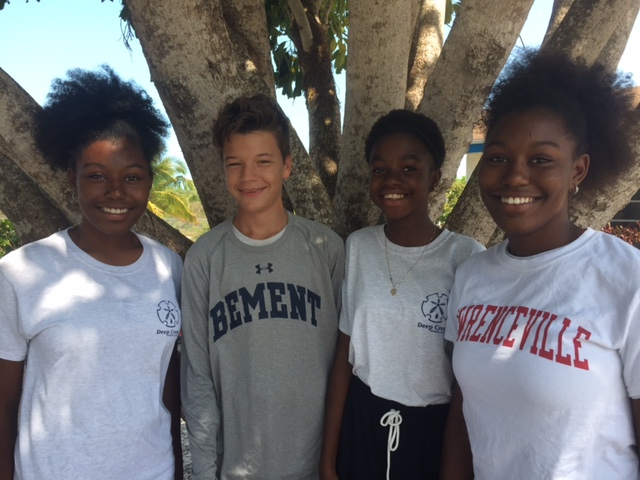As we wave goodbye to our recent visitors, the CEI turtle team would like to extend a huge thank you to the two fabulous Earthwatch teams who shared our enthusiasm for everything, from chasing turtles to scouring the algae beards off the hulls of our boats. The volunteers were as diverse as the underwater world, ranging in age from 15 to 80! As a non-profit that seeks to promote scientific research and education, Earthwatch collaborates with the Cape Eleuthera Institute by sending teams of ready-handed volunteers to help the Sea Turtle Research & Conservation team investigate the mechanism used by juvenile green turtles (Chelonia mydas) to select a foraging habitat. As evolution would have it, sea turtles are darn crafty underwater, often outwitting the many humans and various equipment required to catch and tag them. Our Earthwatch groups provided us with the help we needed in order to employ two different turtling techniques: rodeo and siene netting.
The first Earthwatch team consisted of seven adult volunteers with a variety of backgrounds, from yoga teachers to obstetricians, demonstrating that a passion for sea turtle conservation knows no occupational boundaries. This team were turtle chasing fiends, catching a total of 21 turtles in just one week, including 6 turtles that were new to the CEI tagging program. One of these new turtles, who we called Drewl, was just 22 centimetres long and set the record for the smallest turtle we have ever captured in Deep Creek. When not tagging turtles, Team 1 could be found conducting scientific longlines, assisting with data entry, and witnessing a necropsy performed on a bottlenose dolphin for the Bahamian Marine Mammal Stranding Network. At the end of the week, Earthwatch Team 1 paid a visit to Sheryl’s – a local restaurant ran by The Island School’s very own kitchen staff member, Sheryl Anderson. It was here that they discovered their new favourite seafood, the invasive Red Lionfish. Overall, team 1 had a diverse and busy week – fins were lost (and then found), vans broke down (and were then pushed by strong independent women), and cassava chips were shared. We didn’t think the first group could ever be matched in excellence, but then we met Earthwatch Team 2.
Earthwatch volunteers record biological measurements of a sea turtle they caught from a boat using the ‘rodeo’ technique.
Earthwatch Team 2 was made up of 13 students from Dover-Sherbourne High School, MA, their two teachers and one Earthwatch Institute chaperone. This group had the opportunity to get involved with some of the other research projects at CEI, including longlining for sharks and assessing the health of seagrass around the coast. In addition to catching 15 turtles, the group of students had the chance to measure a Caribbean reef shark (Carcharhinus perezi) caught on a scientific long line. They also assisted graduate student, Izzy Lake, with her Master’s research investigating potential anthropogenic effects on seagrass beds. During a trip to the North of the island, the students visited the Glass Window Bridge, a particularly impressive spot, where they could see the contrast between the rough Atlantic Ocean and the tranquil Caribbean Sea. Among these exciting activities, they also went snorkelling with sea horses, jumped into a 600 foot deep blue hole, and watched bats flutter overhead in the Rock Sound Caves.
The volunteers from Dover-Sherbourne High School gather for a group photo on the shoreline of a creek where they spent the day spot-seining to catch turtles.
The positive attitudes, inquisitive minds, and go-getter mentality of both groups made for effortless teaching. We hope that both teams now understand the importance of the shallow coastal habitats around Southern Eleuthera that act as foraging grounds for Green Turtles during the juvenile and sub-adult phases. The CEI turtle team investigates the spatial dynamics of these immature green turtles and the processes of site selection and resource use within their foraging grounds. Identifying these fine-scale distribution patterns will contribute to a better understanding of habitat use within discrete aggregations of foraging sea turtles, and highlight essential habitats for this endangered species.
If you want to get involved or learn more about our work find us on our website or like the CEI and Tracking Sea Turtles in The Bahamas Facebook pages.
